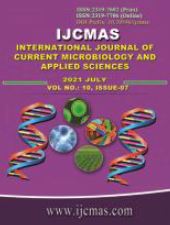


 National Academy of Agricultural Sciences (NAAS)
National Academy of Agricultural Sciences (NAAS)

|
PRINT ISSN : 2319-7692
Online ISSN : 2319-7706 Issues : 12 per year Publisher : Excellent Publishers Email : editorijcmas@gmail.com / submit@ijcmas.com Editor-in-chief: Dr.M.Prakash Index Copernicus ICV 2018: 95.39 NAAS RATING 2020: 5.38 |
TLRs, named for their homology to Drosophila protein Toll, are a class of single membrane- spanning non-catalytic receptors that recognize structurally conserved molecules derived from microbes, once they have breached the physical barriers such as skin and intestinal mucosa, and activate immune cell responses. They play an important role in innate immunity by recognizing a spectrum of PAMPs, by directly and indirectly inducing innate and adaptive immune responses and by having their spatial expression coincident with the host’s environmental interface. The main players in innate immunity, phagocytes, neutrophils, macrophages and dendritic cells, discriminate between pathogens and the self by utilizing signals from the TLRs. They participate in the translation of the non specific information contained in conserved PAMPs into antigen-specific information and clonal expansion of T cells, there by tailoring the adaptive immune response. Mammalian TLRs comprise a large family of at least 11 members. Since, TLRs bind to the ligands that are indispensable components of pathogens, they hold a promise to provide effective vaccine strategies to deal with the mutating ability of pathogens by which they overcome the antibiotic sensitivity and vaccination failures.
 |
 |
 |
 |
 |